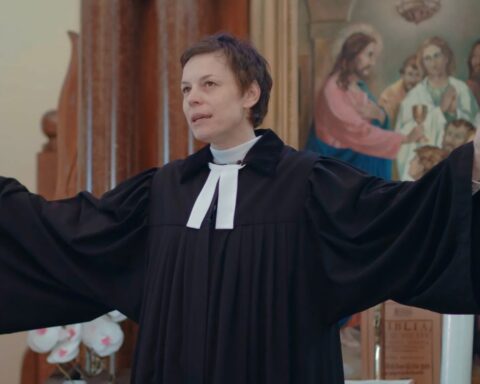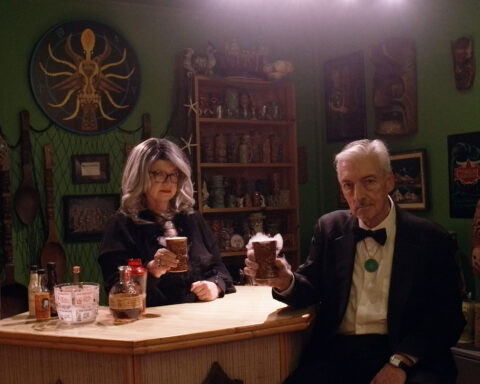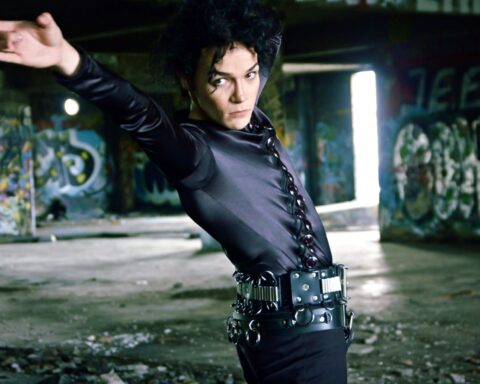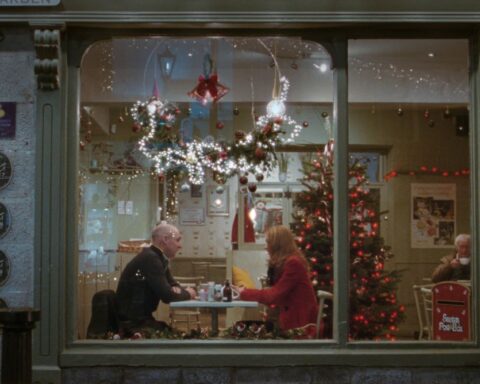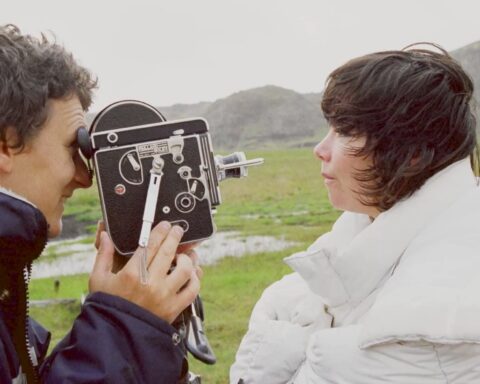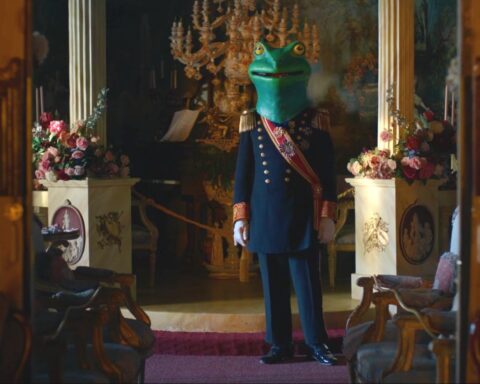Restoring Tomorrow
(USA, 82 min.)
Dir. Aaron Wolf
Director Aaron Wolf takes his camera along a spiritual and cinematic pilgrimage in Restoring Tomorrow. The director explores the USA’s crisis of faith by chronicling the restoration of his childhood place of worship, Los Angeles’s Wilshire Boulevard Temple. Upset by the degradation of his childhood synagogue, the indefatigably earnest Wolf follows his grandmother’s advice and shows that if there’s a will, there’s a way. Wolf’s earnestness sometimes gets the better of the film, and some viewers might be put off by the element of conservatism that underlies the doc, but the film’s heart and intentions are all in the right place. Restoring Tomorrow observes the rejuvenation of a community that develops in harmony with the building’s physical structure.
Wolf is among a shrinking group of young Americans who identify strongly with an organized religious affiliation, as the opening title cards of Restoring Tomorrow note that the percentage of young Americans who claim no religious affiliation is around 30%. (A 2014 religious landscape study by Pew Research Centre confirms that number..) As the number of practitioners decline, so too does the volume of support for the sacred buildings that offer gathering places for the faithful. The Wilshire Boulevard Temple offers a fine metaphor for the reparation of organized religion in communities as Restoring Tomorrow relates the long history of the landmark that brought Los Angeles residents together during hard times.
The history of Wilshire itself could fuel an entire documentary. Wolf speeds through the establishment of Congregation B’nai B’rith, the oldest Jewish congregation in LA, as it developed into the institution undergoing restoration. Admittedly, Wolf finds the richest material in the opening act of the film, which recounts the first Jewish communities to settle in Los Angeles and develop a place of worship that offered a safe space and gathering place for a minority group in the developing city. The doc swiftly moves to the heyday of Hollywood that saw Wilshire undergo a new life just as the studios transitioned from silent films to talkies. Wolf finds great talking heads that speak to the investment of Hollywood moguls like the Warners and Louis B. Mayer in the Wilshire. The Temple was—and continues to be—one of Hollywood’s biggest productions. Even the design of the building, from the seating arrangements and sightlines to the frescoes, offers all the trappings for a star-studded Hollywood premiere.
Wolf briskly takes audiences through the Wilshire’s role in providing support, guidance, and stability to Los Angeles throughout the years. Pivotal moments in US history, like the assassination of JFK and the 1992 riots, saw Los Angelinos both Jewish and non-Jewish see the temple as a place of comfort. Wolf uses the presence of a physical structure as a site for community building as he cuts between the history of the temple and the present efforts to restore it. Central to the restoration is Toronto-native and Senior Rabbi Steven Leder, who recounts in good-natured interviews his resolution to convince the temple’s board of trustees to keep their faith in this sacred institution.
One wishes that Wolf looked beyond his immediate community, though, to see how attitudes to religion are changing in the nation more broadly. As the USA and Canada undergo demographic shifts in their populations, so too are religious communities changing. Restoring Tomorrow doesn’t mention the spirituality of new Americans, yet there’s an invaluable conversation to be had about how organized religion remains strong if one accounts for shifting demographics and provides a link for immigrants to find relatable aspects of culture in their new homes. Some cutaways to visible minorities during reflections on the changing state of downtown LA, similarly, range from awkward to politically incorrect, although the film sees a gathering of people from diverse backgrounds and religious affiliations when the temple reopens by the film’s end.
Restoring Tomorrow makes welcome observations about the value of community bonds that keep the doc relatable even for viewers who might feel alienated by organized religion. These are divisive times and Wolf’s personal essay on the importance of drawing people together is undeniably valuable. The results are bound to inspire the faithful or even non-religious viewers in search of community spirit.
Restoring Tomorrow opens in Toronto Oct. 12 at the Canada Square.
Restoring Tomorrow (2018) Official Theatrical Trailer #2 [HD] from Howling Wolf Productions on Vimeo.




